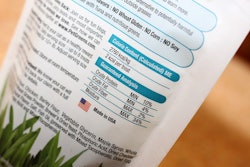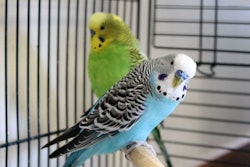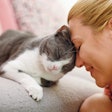
Millennial pet owners have garnered a lot of attention from the pet food and pet care industries the last few years – and rightly so, given this demographic now represents the largest group of pet owners in the US. That means their needs, wants and purchasing behaviors exert considerable influence. “Not only are they becoming the number one source of buying power in America, but they're also changing the face of how the industry operates,” writes Ashley Hoffman on her blog, AllPointsMarketing.
Lest you think the focus on millennials is simply hype (or hooey), consider this: US millennial pet owners increased their total spending on pet products and services by 17.6 percent from 2014 to 2016, and their spending on pet food alone by 32 percent. That’s according to data from the US Bureau of Labor Statistics Consumer Expenditure Survey, presented and analyzed by John Gibbons of PetBusinessProfessor.com.
As a group, millennial consumer units (basically households) spend less on their pets than do other age groups: an average of US$376.60 per year versus US$667.12 for baby boomers and US$541.95 for Gen Xers. Yet, only the two younger groups have increased their spending in recent years, with the biggest boost coming from millennials. “The youngest generations saved the industry from a big decrease,” Gibbons writes.
US pet food spending overall for 2016 did decline by 10 percent, mainly because boomers’ pet food spending dropped by 23.4 percent, aided and abetted by a 5.5 percent decrease by Gen Xers. So the 32 percent rise in millennials’ pet food spending did indeed seem to prevent an even larger drop. “We have seen the trendy nature of food spending over the years,” Gibbons says. “It is possible that the young, connected millennials are now the first to react and buy into each new advance in pet food.”
Picky pet owners want quality, sustainability and more
Perhaps that is true to some degree. Packaged Facts data shows that millennials are much more likely to use raw pet foods or ones with formulations aimed at enhancing their pets’ health. Yet Hoffman argues that this generation of pet owners can be very selective, too, particularly about quality. “Millennials are one of the ‘most picky’ generations in terms of product quality, especially when it comes to their pets,” she writes.
Millennial pet owners also seek and demand sustainably sourced products, natural and holistic pet foods and full transparency – and all at a low price. Or, at least at a good, proven value.
Transparency is currently a buzzword, but its continuing popularity and ongoing status as a top consumer trend owe a lot to millennials’ increasing influence and purchasing power, because they, perhaps more than any other group of consumers, expect it. “Millennials hate being sold to or lied to, and many can smell it from a mile away,” Hoffman says. That means they expect and reward authenticity from brands, too.
What transparency means to millennials
How does a pet food company be transparent? By “being completely open and honest about sourcing, manufacturing and selling processes,” Hoffman writes. But transparency and authenticity must permeate your brand, not just apply to your products.
Further, it’s not enough to be honest and forthcoming when a consumer asks about your products or practices; you must communicate openly about everything from the beginning, before anyone asks, Hoffman advises. With millennials doing their own research to educate and inform themselves much more than other age groups (especially previous generations), “they know when a company isn’t being completely honest with them,” she says.
By being upfront about your ingredient sourcing, production and other aspects of your business, millennials are more likely to trust your company and feel more closely connected with your brand. That could even lead to that prize rarely won from millennials: brand loyalty.

















